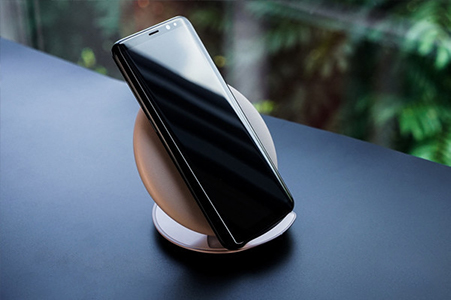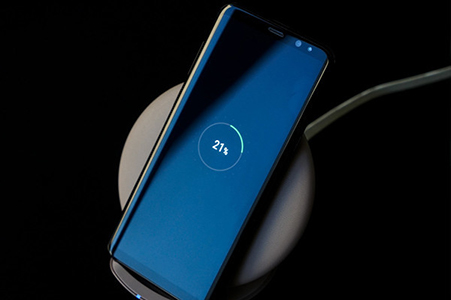Overview
The principle of wireless charging is to conduct energy from the wireless charging device to the charging terminal device through near-field induction, and the terminal device converts the received energy into electrical energy and stores it in the battery of the device. The principle of energy conduction is inductive coupling, which can ensure that there is no exposed conductive interface, not only can save the messy transmission lines between devices, but also safer for electronic devices such as electric toothbrushes that are often in contact with conductive media such as liquids.

How many types of wireless charging?
There are currently three main forms of wireless charging:
1. Electromagnetic induction wireless charging
2. Magnetic field resonance wireless charging
3. Radio wave wireless charging
Principle of electromagnetic induction wireless charging
Electromagnetic induction wireless charging is the most widely used wireless charging solution. As mentioned in high school physics textbooks, alternating current with a certain frequency through the primary coil is used, and then electromagnetic induction is used to generate a certain current in the secondary coil, thereby transferring energy from the transmission end To the receiving end. At present, the most common charging pad solution uses electromagnetic induction. In fact, the electromagnetic induction solution does not have too much mystery in terms of technical realization. The local BYD company in China applied for the non-contact induction type as early as December 2005. The charger patent uses electromagnetic induction technology.

Principle of magnetic field resonance wireless charging
Magnetic field resonance wireless charging consists of an energy transmitting device and an energy receiving device. When the two devices are adjusted to the same frequency, or resonate at a specific frequency, they can exchange each other's energy, which is also currently being studied. Kind of technology. A research team led by Marin Soljacic, professor of physics at the Massachusetts Institute of Technology (MIT), used the technology to light a 60-watt light bulb two meters away and named it WiTricity. The diameter of the coil used in this experiment reaches 50cm, and it cannot be commercialized. If the size of the coil is to be reduced, the received power will naturally decrease.
Principle of radio wave wireless charging
This is a relatively mature technology, similar to the early use of mineral radios. It mainly consists of a microwave transmitting device and a microwave receiving device. It can capture the radio wave energy bounced from the wall and maintain a stable DC while adjusting with the load. Voltage. In this way, only a transmitter installed on the wall plug and a "mosquito" receiver that can be installed on any low-voltage product.
What's the main features of wireless charging
1. In theory, wireless charging technology is safe and harmless to the human body. The resonance principle used in wireless charging is magnetic field resonance, which only transmits between coils that resonate at the same frequency, while other devices cannot accept the band. In addition, The magnetic field used in the wireless charging technology is indeed harmless to the human body. But wireless charging clock is a new type of charging technology after all. With Maiyuanke’s wireless chargers, many people are worried that wireless charging technology will be the same as Wi-Fi and mobile phone antenna poles. In fact, the technology itself is harmless.
2. Sunderly’s wireless charging technology uses the principle of induction cooker to convert magnetic energy into electrical energy between the charger and the mobile phone, while the coil and capacitor have a conversion effect during charging.
3. Sandeli said that this system can be widely used in the future, such as charging areas for electric vehicles and power transmission for computer chips. The charging system developed with this technology requires only one-150th of the current charging time.
4. The conversion rate has always been a concern for many people. Research by MIT has shown that the loss of wireless charging technology is higher than that of wired charging technology. Maiyuan said that the high conversion of wireless charging is also a key factor in the global application of wireless chargers. However, wireless charging technology is also limited by distance. For future development, it is a priority to solve the problem of precise positioning of the waveband and magnetic field for long-distance transmission.
5. The core chip of resonance control is the resonance principle control center of wireless charging technology. Precise radiation range control, magnetic field frequency and other controls are all realized by the chip.
How does wireless charging technology develop?
Since the loss of wireless charging in the transmission process is greater than that of wired charging, and the greater the loss will increase with the increase of distance, in the current commercial cases, the short-distance wireless charging applications of small power and small appliances are mostly used. It is hoped that with the advancement of various studies, wireless charging technology can be popularized in more application scenarios in the future.
 online service
online service 0086-591-8806 9579
0086-591-8806 9579 88067049
88067049 izzy@lexinda.com
izzy@lexinda.com sarahlpr
sarahlpr 86-15336506363
86-15336506363